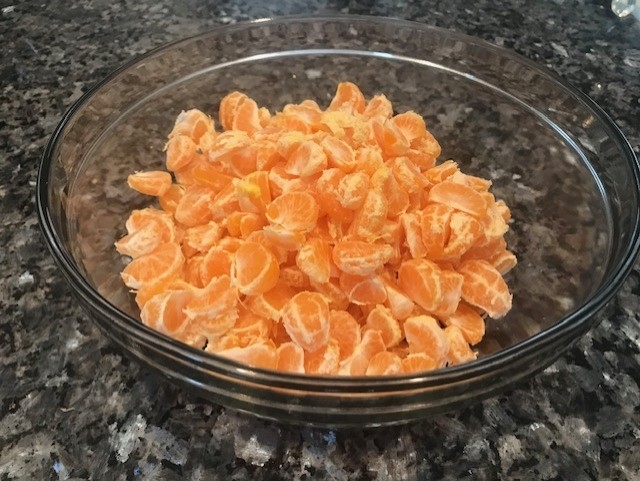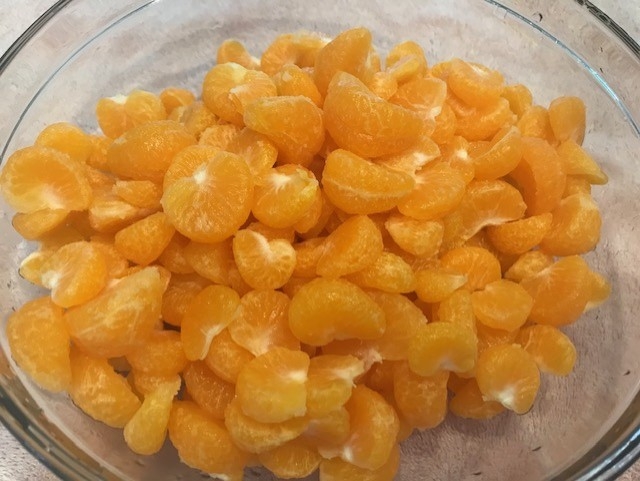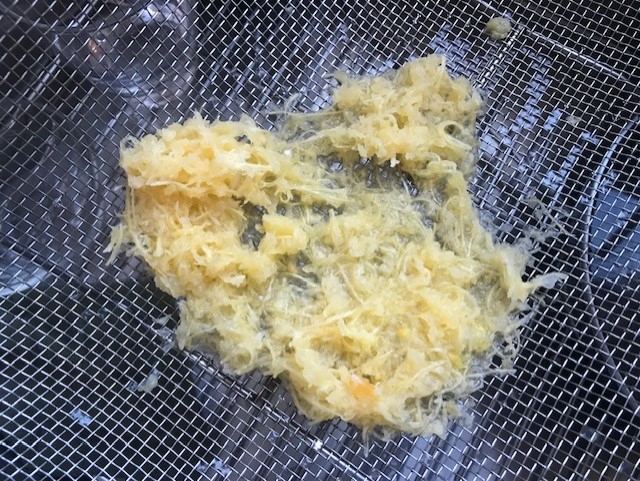
However, my journey into preserving the essence of mandarins has led me to a crucial revelation: the necessity of supreming the citrus (eliminating the pith and tough membranes) for unparalleled enjoyment. Delving into extensive research, I've discovered a pre-canning technique that transforms the mandarin preparation process – treating the peeled mandarin sections with pectinase.

Pectinase, an enzyme with remarkable capabilities, has found its way into the hearts of citrus enthusiasts by simplifying the process of removing the pith and tough membranes from citrus fruits. Derived from microorganisms like bacteria and fungi, this enzyme plays a pivotal role in breaking down pectin, a complex polysaccharide that gives structure to plant cell walls. In
this article, we delve into what pectinase is and how it can be effectively used to enhance the citrus eating experience.

How Pectinase Works: Pectin, a complex carbohydrate found in the cell walls of plants, creates a mesh-like structure that provides rigidity. In citrus fruits, pectin is concentrated in the pith and membranes, making them challenging to remove. Pectinase acts as a catalyst in the hydrolysis of pectin, breaking it down into smaller molecules. This enzymatic action weakens the structural integrity of the pith and membranes, making them more susceptible to mechanical separation.
Using Pectinase for Citrus Fruit:
1. Selecting the Right Pectinase Product: Start by choosing a high-quality pectinase product suitable for food applications. Ensure that it is derived from safe and approved sources and follow the recommended dosage instructions provided by the manufacturer.
2. Preparing the Citrus Fruit: Wash the citrus fruit thoroughly to remove any dirt or contaminants. Peel the citrus and break it up into the sections of the fruit, exposing the pith and membranes that need to be removed. Place fruit in a container.
3. Application of Pectinase: Following the manufacturer's recommendation, add pectinase and water to cover the fruit. Allow the enzyme to work for a recommended duration, which may vary depending on the product.
4. Mechanical Separation: Once the pectinase has had time to act, use gentle mechanical pressure or utensils to separate the softened pith and membranes from the fruit. The enzymatic action should make this process more effortless compared to traditional methods.
5. Rinsing and Enjoying: Rinse the fruit segments thoroughly to remove any residual enzyme solution. You are now left with citrus segments that are free from the undesirable pith and tough membranes. Enjoy your citrus fruit without the hassle. The fruit is now read to eat or preserve.
Benefits of Using Pectinase:
Improved Efficiency: Pectinase significantly accelerates the removal of pith and membranes, streamlining the preparation process and saving time in the kitchen.
Enhanced Quality: The enzymatic action of pectinase results in a cleaner and more aesthetically pleasing presentation of citrus segments, contributing to an enhanced dining experience.
Consistent Results: Using pectinase ensures a more consistent outcome, as the enzymatic activity is predictable and reproducible when following recommended guidelines.
Pectinase stands as a game-changer for citrus lovers seeking an efficient and hassle-free method to remove the pith and tough membranes from their favorite fruits. By harnessing the power of this remarkable enzyme, individuals can enjoy the pure, unadulterated goodness of citrus without the unwanted textures that often accompany the traditional peeling process. As the popularity of pectinase grows, it is poised to become an indispensable tool in the kitchen, bringing joy to citrus enthusiasts and culinary enthusiasts alike.
Images courtesy of Sherida Phibbs